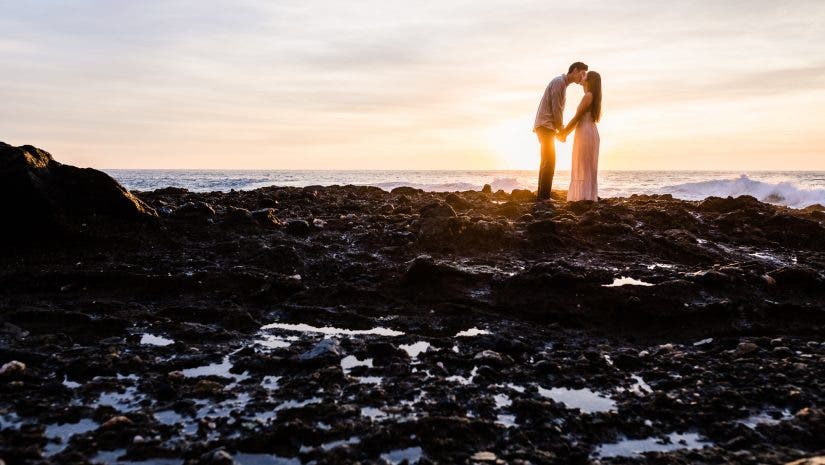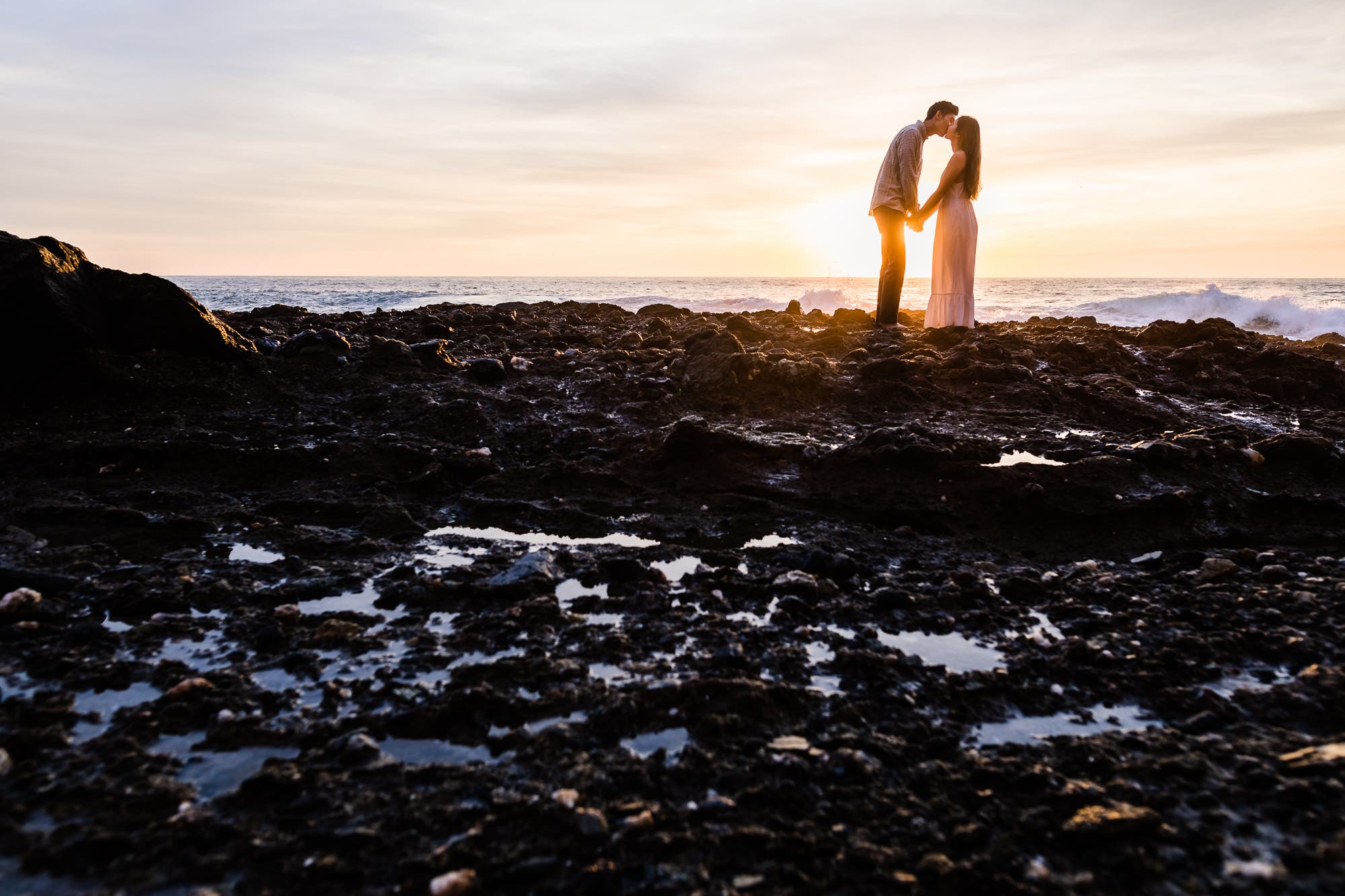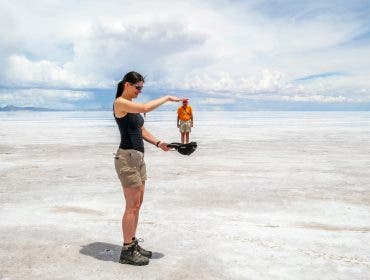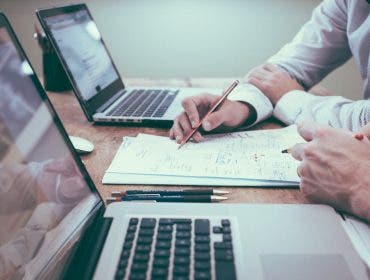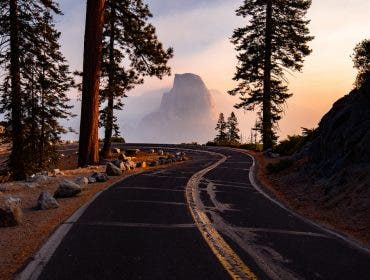Aside from offering photographers an opportunity to capture incredible couples portraits, engagement photography sessions come packed with benefits. Most engagement session photographers also shoot the couple’s wedding, making engagement sessions an integral part of a wedding photographer’s workflow. As such, engagement sessions allow photographers to break the ice and work with the couple without the pressure of wedding timelines. In addition, photographers can use these sessions to try out new techniques for creating portfolio and award-worthy images. Of course, if the couple doesn’t like the photos, there’s more at stake than a typical shoot. It’s important to make the most of the opportunities given. To help, we’ve put together 10 engagement photography ideas and tips for capturing incredible photos at every session.
What Is Engagement Photography?
Engagement photography refers to photographs of couples who just got engaged. It includes capturing snapshots during popping the question, artful couple portraits, and photo sessions celebrating the milestone. Engagement photos usually end as albums, large prints, or collages. They require good lighting, high-resolution image files, and perfect sharpness. However, they also require lots of creativity to avoid being cliché.
10 Engagement Photography Tips and Ideas
Open with the W.A.V.E.
I believe the best photos have less to do with technical proficiency and more to do with how well they resonate with clients. The only way to capture meaningful moments is to get to know your clients and understand what matters to them. For this, I created the W.A.V.E., or “wall art vision exercise.” It’s simple to use and it’ll help you deliver photos that exceed your clients’ expectations.
Here’s how to do the W.A.V.E.
- During the initial meeting with your client, let them know you want to walk them through an exercise.
- Start by asking them to imagine a room in their home where they might hang a piece of artwork.
- Next, ask them about what they’re imagining. Where in the room would they hang the artwork? How big is the actual wall space (e.g., 4’x5’)?
- Then, set guidelines for narrowing down their choice of artwork. Tell them they can only choose one image from the upcoming session, that it will cost roughly $3,000 (it doesn’t have to be this amount, but we’re looking for value), and that they will see and enjoy it every day.
- Once you’ve explained the rules above, ask your client, “What is the one photo from the session that you’d choose to hang on the wall?” You may have to walk them through the shoot and consider where it will be, what they’ll be doing, whether it will look more candid or posed, and so on.
- After the client answers, restate and elaborate on their vision.
- Ask both people to answer these questions.
The purpose of the W.A.V.E. is to uncover what the client’s truly value and desire from their photos. It also gives you a good idea on what to focus on for the engagement session. Lastly, it gives you an opportunity to reiterate and expand on their vision, showing that you understand their vision and values. To be clear, the W.A.V.E. isn’t a sales pitch, but it can lead to print sales down the line. Of all the engagement photography ideas and tips in this article, this is probably one of the most important.
Plan Ahead
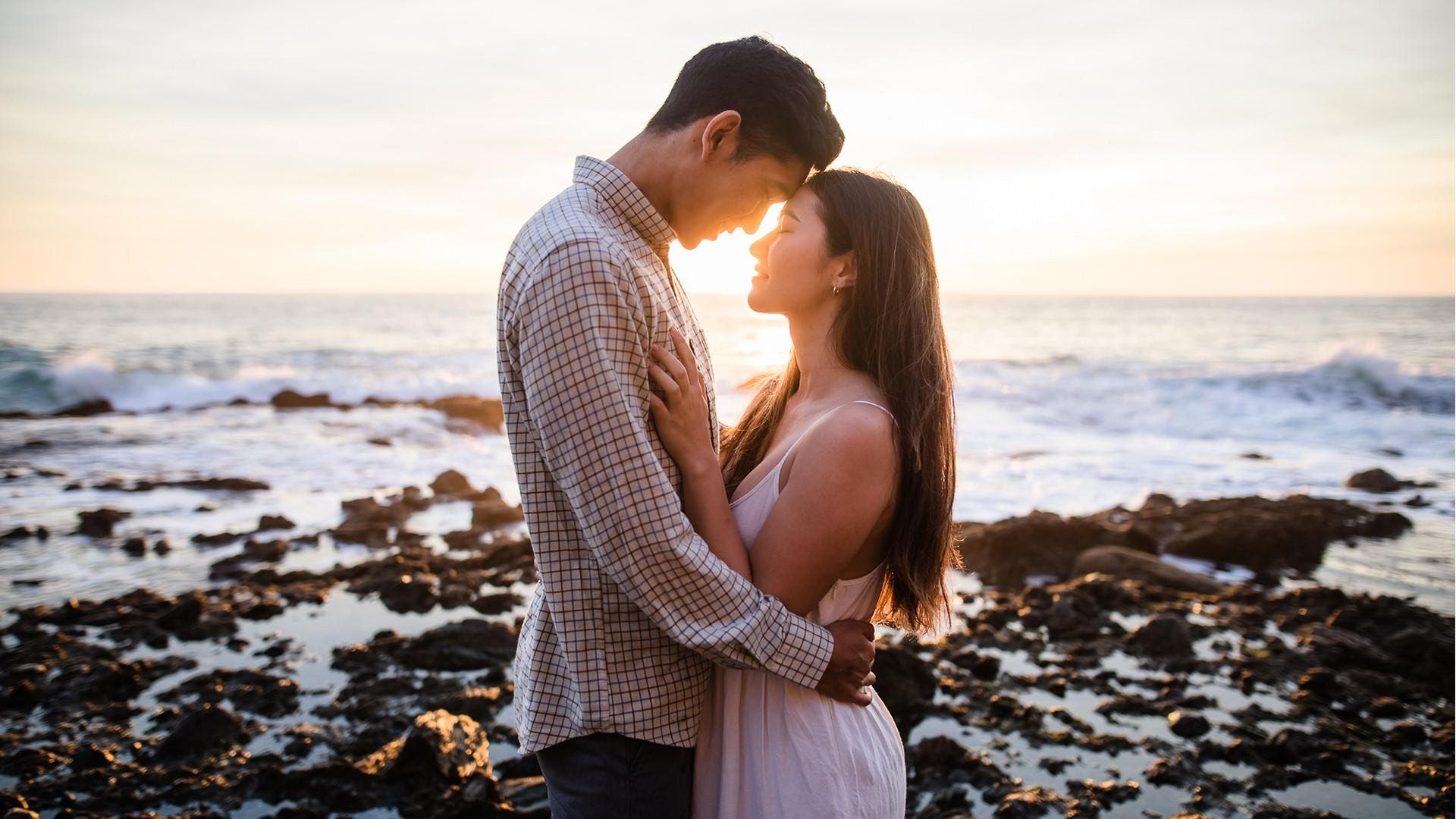
Like most shoots, there’s plenty to prepare for in advance. Here’s a quick overview of some elements to consider when planning for an engagement shoot with your clients.
- Location: It’s not uncommon for clients to ask you to choose or suggest a location for the shoot. If you plan to shoot the session locally, you probably know some spots. It’s worth jumping online and looking for new spots to suggest as well. Do a quick Google search for topics like “Best Engagement Photography Locations in New York City” and see what comes up. If you’ve already done the W.A.V.E., then you might have a good idea of what to look for. Be sure to check permit requirements as well. You don’t want to get kicked out of the location during your shoot.
- Time of Day: Most outdoor sessions revolve around golden hour, but location, weather, and other factors can come into play. Your client’s stylistic preferences may not involve the bright and airy look often associated with golden hour. Again, running through the W.A.V.E. and using a moodboard with your clients will help narrow this down.
- How Long to Shoot: The more locations you visit or wardrobe changes your clients make during the shoot, the more time you’ll need. I’ve found that three hours works well for two locations (no more than 30 minutes apart) and a couple wardrobe changes. This will vary, but it’s worth considering to avoid heading into a shoot with no end in sight.
- Clothing: If you’re not familiar with color theory, I recommend looking into it. Couples may ask for advice on what to wear, and it helps to know which colors work well together. It’s also important that the couple (and you) dress comfortably. One thing I always recommend that my clients bring is a jacket, especially if the shoot is scheduled to run past sunset.
- What Gear to Take: If you tend to shoot more using only natural light, then you can travel light, gear-wise. You don’t need a full arsenal for every session. For example, I recently discovered that I’m able to knock out most of my sessions using only a Canon EOS R5 camera body and a Canon RF 28-70mm f/2 L USM lens. I discuss this minimalist setup and why I like it in more detail in this video on Adorama’s YouTube channel. While I love natural light photography, I do like to use an detachable camera flash, too, as it opens up more opportunities for shooting in different situations. A minimalist lighting setup might include a Profoto A10, a Manfrotto Nano Stand, and a shoot-through umbrella. I typically take along an assistant to help with gear so that I can focus more on my clients and taking photos.
Scout for Success
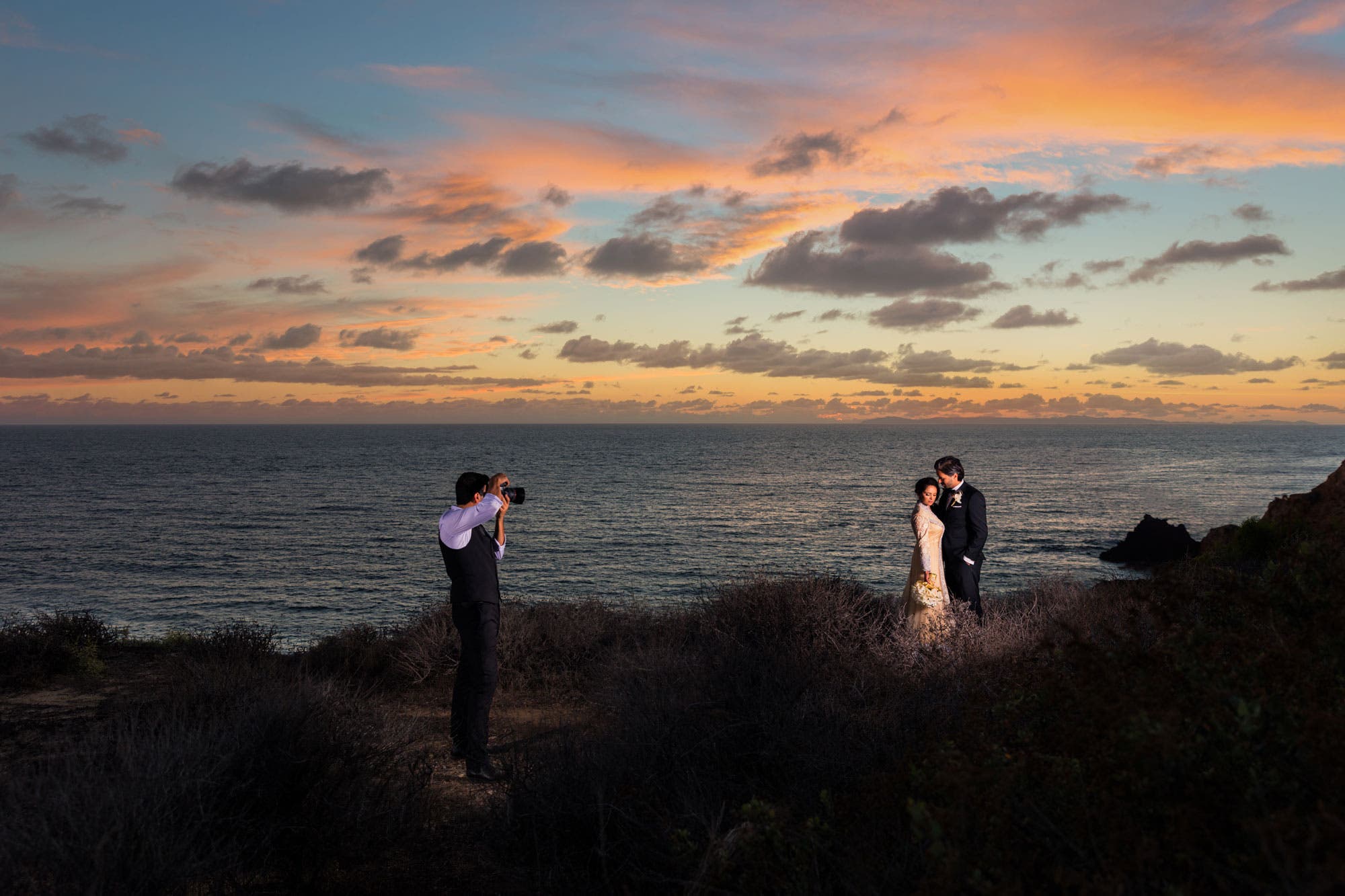
I’ve included this in a list of engagement photography ideas and tips, but I recommend it for any shoot. Even if you’ve photographed a location a dozen or more times, or even studied it online, scout it again. Locations change, sometimes seasonally, other times because of construction, and you should know what you’re walking into. It also helps to look for angles or backdrops you haven’t seen or tried before. After you’ve built up a portfolio, couples might ask for specific spots, and it’s fine to revisit them. However, you can always add a creative twist or pick up some ideas for other shots while scouting.
Pose & Direct with Confidence
Most couples are uncomfortable and feel awkward in front of the camera. They’re going to look to you for clear guidance and expect you to know how to make them look great. You might currently feel intimidated when it comes to posing, but that’s about to change. Luckily, there are some basic guidelines to follow to simplify the posing process. In order to create authentic, natural looking portraits, you’ll need to wear your director hat and get comfortable in it. The tips below will help with that.
Foundation Posing
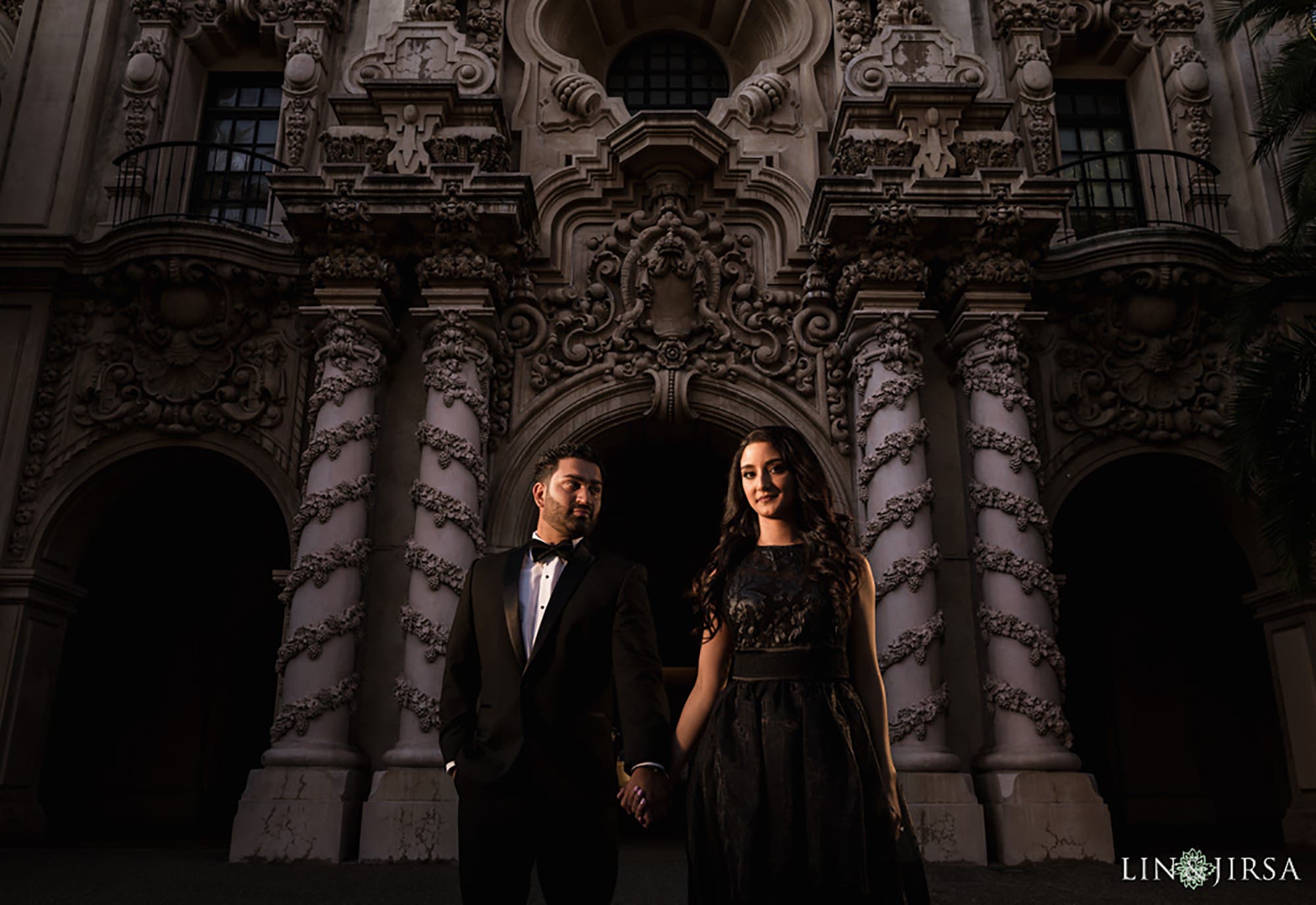
You can take the guesswork out of posing with five simple foundational poses. I’ve covered them in more detail in an earlier article, but we’ll take a quick look at them here:
- V-Up: Tell the couple to imagine that their shoulders and hips are hinged together, like a door in a frame, and explain that their bodies should form a “V” shape as they face one another. This look is popular on the red carpet.
- Closed Pose: For the closed pose, the couple should face one another with their chest, hips, and feet squared up.
- Open Pose: For the open pose, the couple should “open up” with their chest, feet, and hips all facing the camera.
- Stacked Pose: For the stacked pose, the taller person typically stands behind the other while their shoulders, hips, and feet face the same direction. Be careful not to capture a classic prom portrait when using this pose.
- Reversed Pose: For the reversed pose, ask one person to face away from the camera while the other person directly faces the camera.
I recommend going over these poses with your couple at the start of the session and then get the session rolling with basic poses. One of the best parts about doing an engagement photography session is that you can cover all of these poses with your couple before their wedding day. That will make things move much more smoothly and quickly when the big day arrives.
Movement
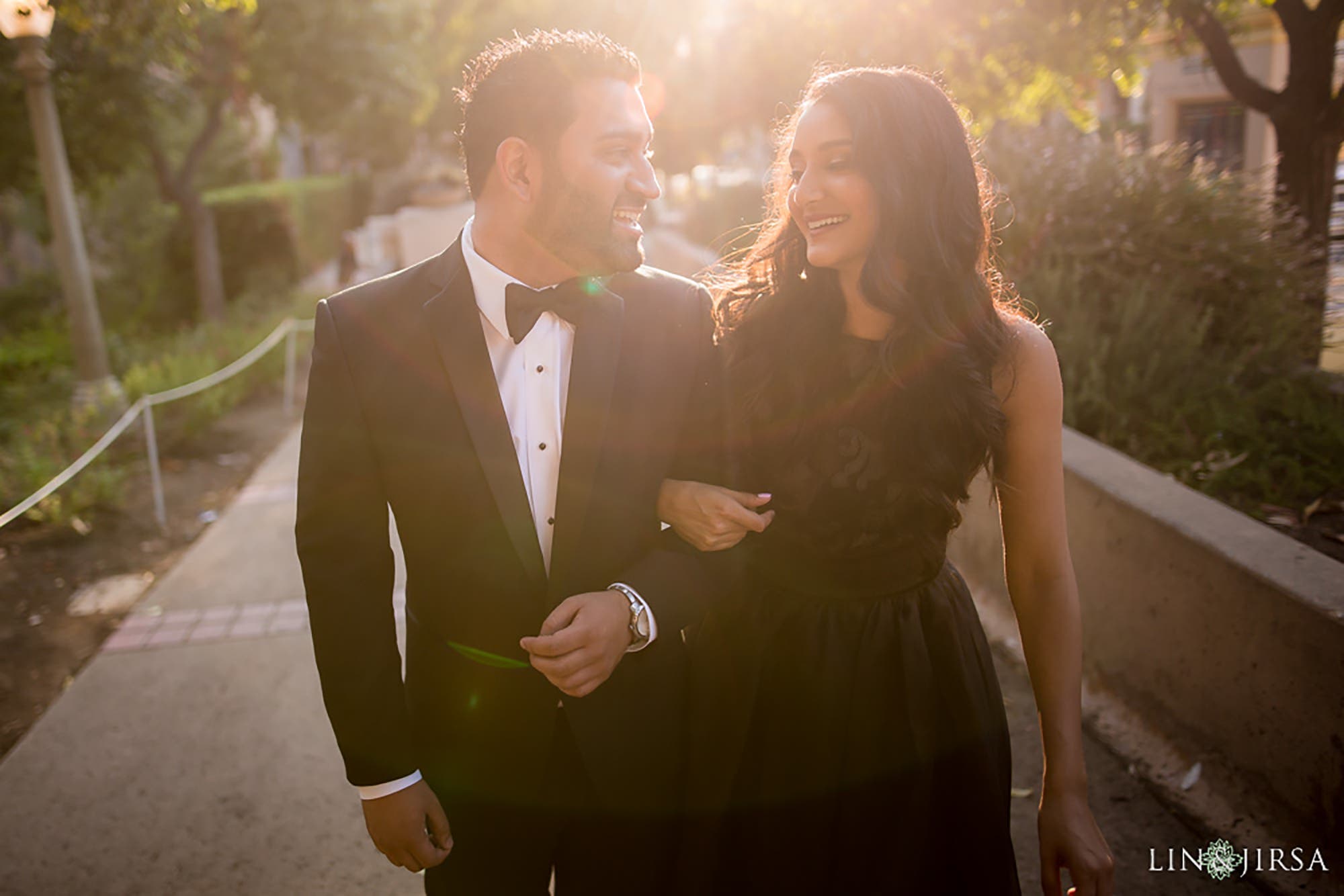
Contrary to popular belief, posing is not always static. Movement adds a sense of candid authenticity. One of the best ways to introduce motion into your session is to have your couple take a walk. Simply ask your couple to link arms or hold hands and then have them walk toward you. Encourage the couple to naturally interact with one another and talk, laugh, and so on.
Cues to Use
In the video above, Vanessa Joy shares some posing tips and excellent examples for how to capture relaxed, authentic images. Remember, posed images don’t have to look posed.
Light for the Occasion
You should discover during the talkthrough, long before you meet the couple for the shoot, what lighting style they prefer. Are they fans of the bright and airy style? Or, do they prefer the look of dramatic, editorial-style portraits?
Natural Light
Most photographers fall under the natural light umbrella. It’s a great style for engagement photography, and it’s usually easier than using flash. Golden hour is easily the most popular time of day to shoot portraits, and a lot of that has to do with how beautiful the available light is during the last hour or so of the day. Because you use natural light, however, doesn’t mean you can’t modify the light. A well-known go-to for modifying natural light is the trusty 5-in-1 Reflector. They’re affordable, and more importantly, effective. Check out Mark Wallace’s video above for more tips on how to use a reflector and make the most of natural lighting.
Flash Photography
When it comes to flash photography, you have two basic options: On-camera and Off-camera flash. Again, whether or not you use flash photography during your session will depend on your client’s preferences. Should they opt for a more dramatic look, then it’s time to put your flash photography skills to work. We can’t cover all things flash in this single article, but I can share one of my favorite, easy-to-use engagement photography ideas and tips for using flash below.
Two-Light Environmental Backlit Engagement Portrait
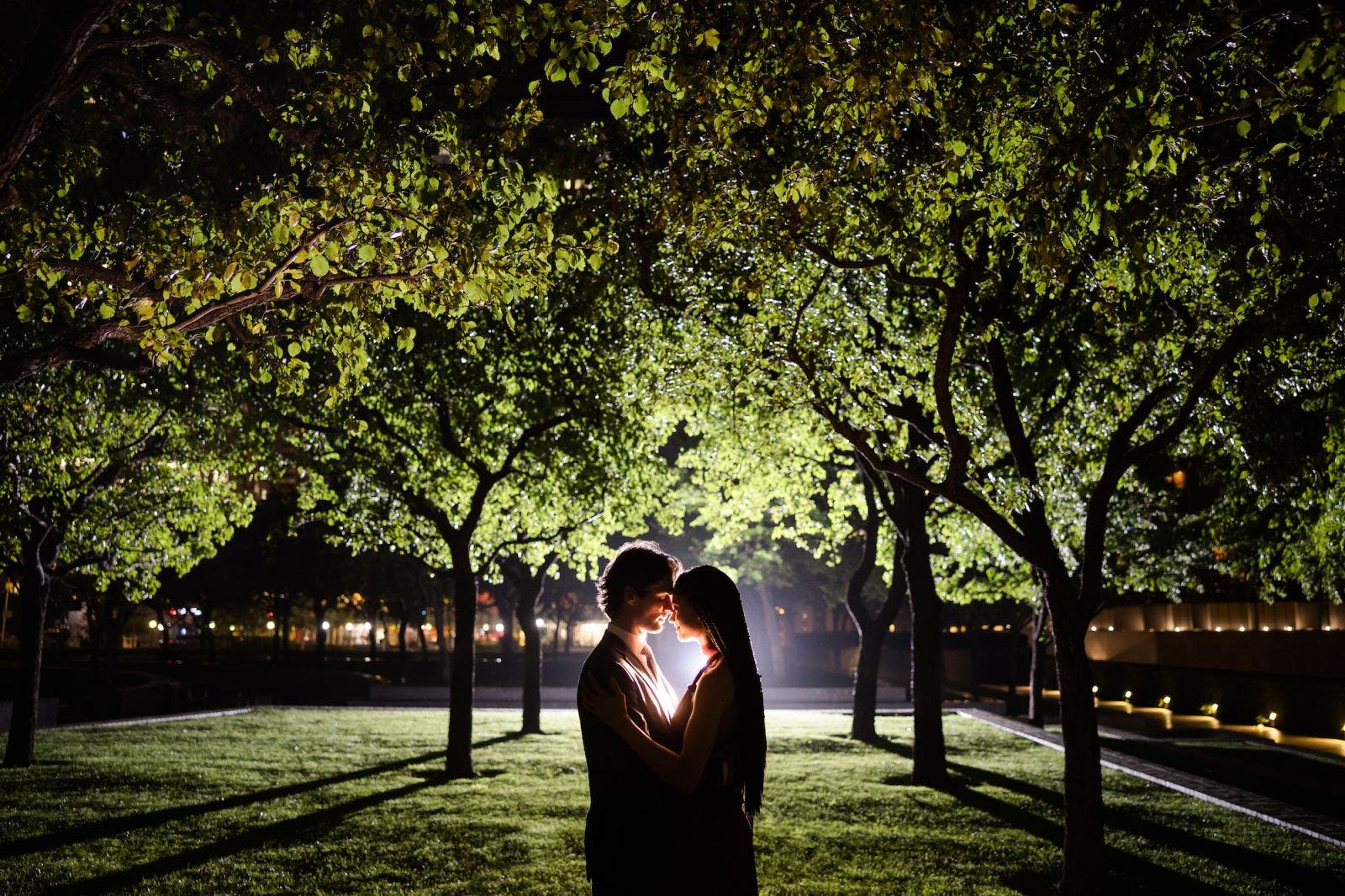
When the natural light goes down and you want to add a touch of flash for creative effect, make a silhouette. We’ll use the image above for an example. Here are the steps:
- After you’ve composed your shot, place two flashes behind the couple. The first light, which is used to create the blooming light around the couple, is placed 1-2 feet behind the couple at shoulder height. I placed a MagMod MagSphere and a MagGrid on the flash and pointed it at the male subject’s shirt. The shirt is white, so it can be used to bounce more light onto the couple. Be careful not to blow out the light on the couple.
- Then, place a secondary light about 30 feet behind the couple (or as far back as you can go) to illuminate the background. Wherever you place the lights, make sure to use the couple in front to hide the lights. Otherwise, you’ll end up with distracting flares.
- Pose your couple and capture the shot.
If you have a solid backdrop, you can use a single flash and point it away from the couple to create a silhouette.
Shoot for Story
It’s great to capture epic environmental portraits that the couple can hang on the wall or use to fill an entire spread in an album, but it’s important to go beyond the singular epic and also shoot for story.
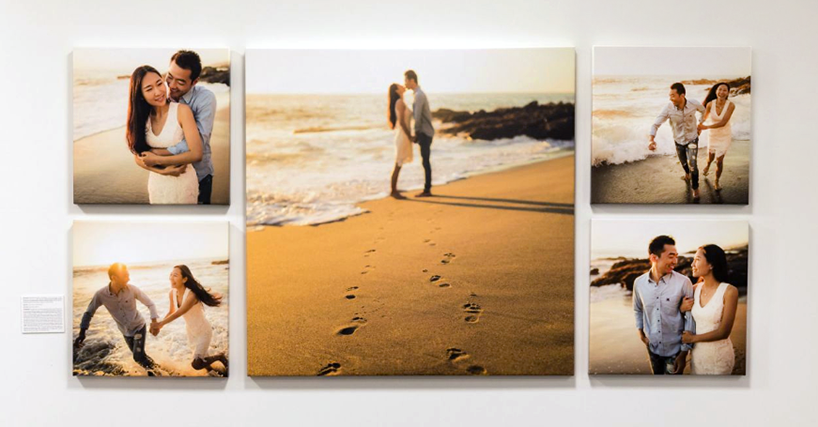
The easiest way to understand how to do this is to think of the movies and television shows you’ve watched. They typically open on a wide scene, showing the exterior of a building to establish the setting. Then, they move into a medium shot of people sitting across from one another at a table. Finally, we’ll get a close up of one of the people who’s speaking, usually from behind and over-the-shoulder of the person they’re talking to. You can do this same thing, using wide, medium, and tight/close-up angles, to tell a story with your engagement photos.
If you intend to sell wall art or albums, then this approach is key. It’s also just an ideal approach for capturing a variety of photos in the same scene.
Capture the Moments in Between
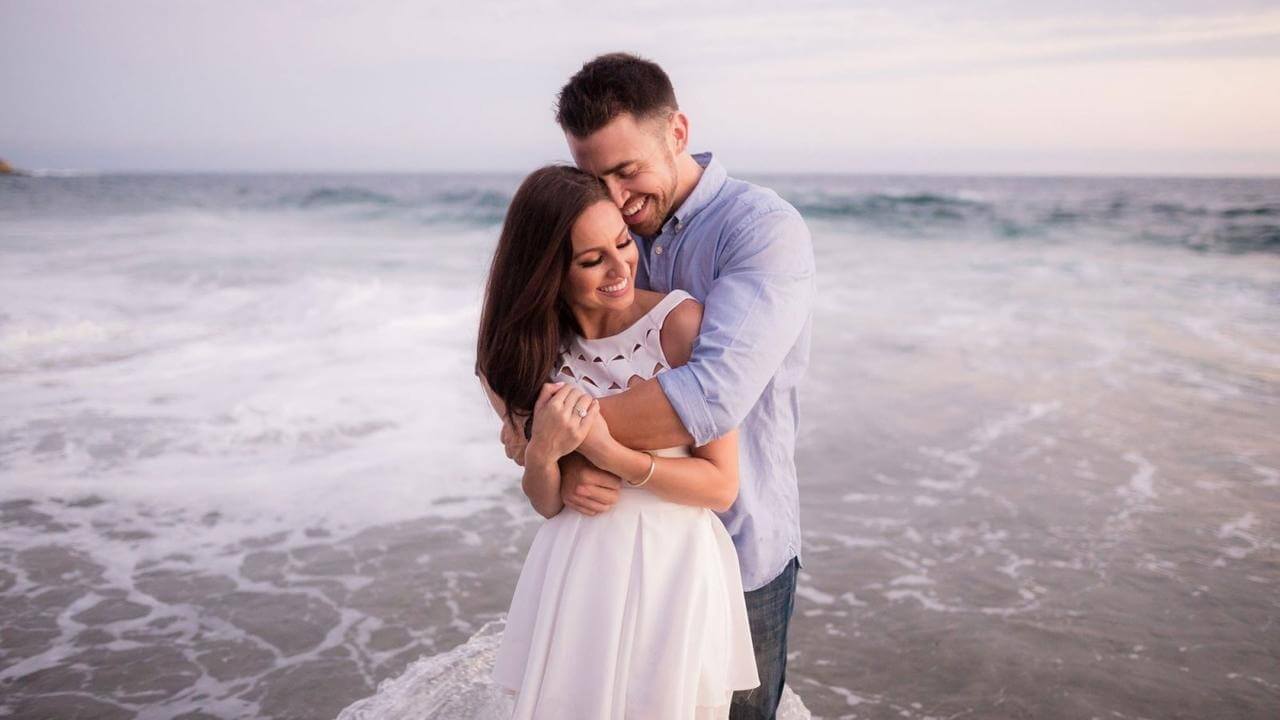
When we’re working, we have a lot on our mind. We’re looking at the backdrop, posing our subjects, checking for expressions, and making sure everything’s in focus. It’s easy to get into the habit of chimping after you’ve snapped a few shots to make sure everything’s perfect. When we do that, however, we risk missing authentic moments that the couple shares in between our commands. Instead, direct your couple into a pose, cue their expression, take a couple shots, and then take a couple more after they’ve relaxed. Some of the best, most natural looking photos come from these in-between moments.
Get Creative
As professional photographers, we’re often categorized as “creatives.” The name fits as we tend to reach for more than the simple walk-up shots that people might take without putting too much thought into the picture. Engagement photography sessions afford us a unique opportunity to try new techniques and capture images that our clients will love and that we can use for marketing purposes. It can also just wow our clients, which will go a long way in earning their trust and confidence in this and future shoots.
Here’s a brief, non-exhaustive list of ways we might try to push our creativity:
- Composition (Negative space, Unique perspectives/angles, Depth of field, Foreground elements, Framing, etc.)
- Lighting (High key, Low key, High Contrast, GOBOs, Color gels, etc.)
- SFX Tools (Color gels, LED Light Strings, Prisms, etc.)
- Reflections (Prisms, Windows, Water puddles, Smartphone surfaces, etc.)
We can combine and use these tools to overcome a number of challenges we might face during a shoot, as demonstrated in the video above. I hope you’ll find it inspiring and use the tips during your next engagement session.
Edit with Consistency
Clients often do not know the exact editing style they are looking for. In fact, your client might send over a shot list or a moodboard from many different photographers with many different styles. However, remember that a moodboard is simply “a collection of images that represent the desired style, aesthetic, and/or other photographic elements for the photo session,” according to Wedding Maps. Use the images on the moodboard as inspiration to merge with or incorporate into your style, and be sure to avoid trying to match the various editing styles in the images.
As you develop your brand, you’ll likely develop an editing style, too. Editing with consistency works well for this purpose, and it will also help you sell more prints. As you’ll see in the tip below, part of the end goal here is to have the photos printed in an album or a wall art cluster. If the edits are inconsistent, then the photos won’t fit together in groups.
Offer a Free Design Consultation
You should already have an end product in mind when working through the W.A.V.E. exercise. It might be a piece of wall art (single frame or cluster), a photo album, or even basic prints. Whatever the product, the goal is to have your clients value the photos enough to print them. It’s a win-win for you and your clients as you earn additional revenue and your clients end up with heirloom quality images that they’ll cherish forever.
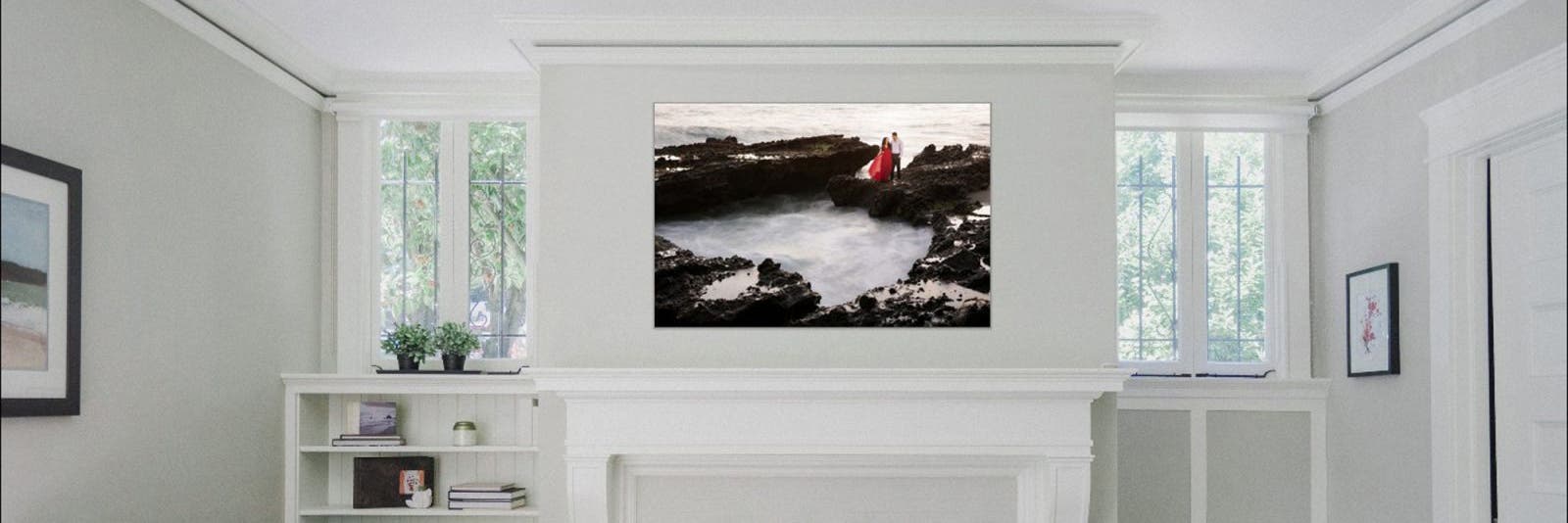
For the last of the engagement photography ideas and tips included here, I recommend offering your clients a free design consultation. What does that mean? Basically, you will need to quickly cull and edit a decent selection of photos after your shoot. Then, within 7-10 days after the shoot, invite your clients in to the studio (or to coffee if you don’t have a reserved space), and share the following assets with them:
- Slideshow: Open with a brief slideshow featuring 20-30 images from the session. Part of the reason for holding the consultation so close to the shooting date is to revisit the images while the couple is still excited about them. Also, it may help to set the images to a song you think the couple might enjoy to add to the emotional impact of the photos. I’ve had several couples tear up when watching their slideshows.
- Photo Album: Design a quick, yet attractive, photo album mock-up with about five spreads or so to highlight the images in more of a storytelling sequence (remember tip #6 above). I like to use Fundy Designer for this, but whatever software you have available and feel comfortable using is fine.
- Wall Art: Design a couple wall art mock-ups so that they can see how the photos will look on their walls. You can ask your clients to share a photo of the actual wall they intend to use in their home, or you can use a stock photo for the mock-up. Again, I prefer Fundy Designer for creating these mock-ups. They have stock photos of bedrooms, living rooms, and more, ready to go.
The couple may also intend to use the photos for Save-the-Date cards or to have prints or canvases up at the wedding. You can have designs ready to go for those as well if you know this in advance.
Engagement Photography: Frequently Asked Questions
The cost of engagement photography varies a lot. The first factor is the photographer’s notoriety. If you want Annie Leibovitz to take your engagement photographs, the price will skyrocket. A local photographer may be more affordable.
The price also depends on how many engagement photos you want. For example, the average cost per hour of an engagement photographer may be around $200 – $300. If you want just a few snapshots to capture the moment she or he says ‘I do!’, an hour is enough. If you plan a complete photo session, you may need more than an hour.
Don’t forget to add the cost of booking a location, traveling, and prints when calculating the cost of engagement photography.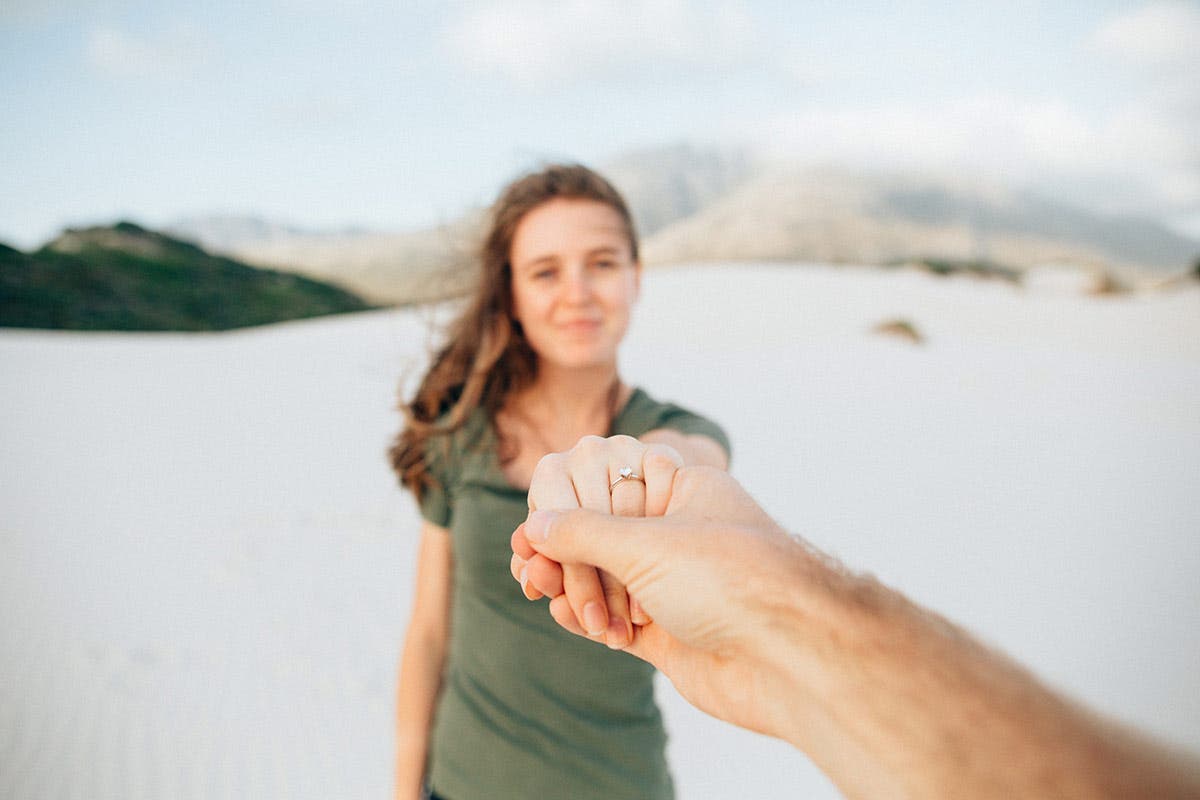
Most engagement photographs are taken either at the exact moment of the engagement or immediately after. Engagement photography aims to capture surprise, excitement, and emotions. So, the closer to the ‘I do’ moment you plan the photo shoot, the better.
Of course, if you are waiting for a particular season, location, or photographer, any time before the actual engagement and the wedding is good for taking engagement photos.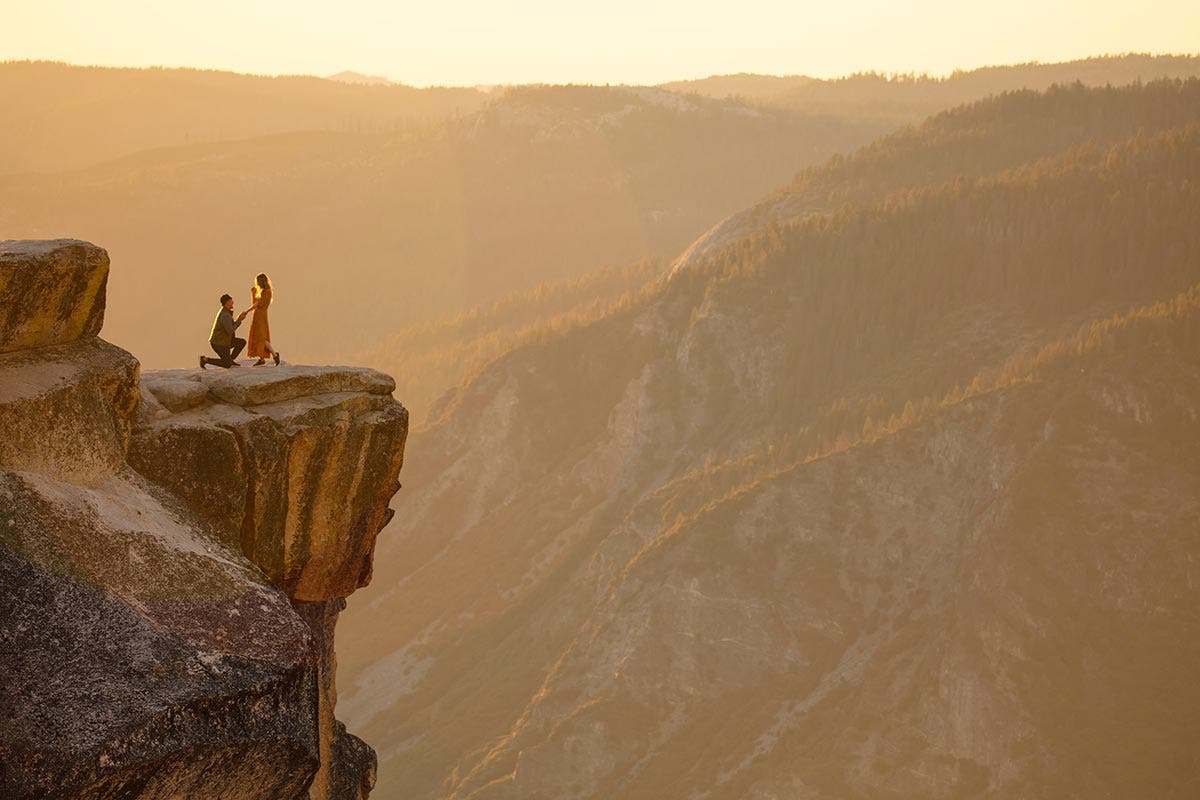
Engagement photography includes several types of photographs, such as portraits, environmental photos, and close-ups. Therefore, the photo shoot may focus on various engagement photo poses that fit the couple’s personality but also on close-ups of the two, engagement rings, flower bouquets, and so on.
Engagement photos may also capture the landscape and atmosphere of the engagement. It’s not uncommon to see engagement photos with the silhouettes of the couple on a beautiful sunset background.
During the photo session, the couple may change location, outfits, and engagement photo poses. They may switch from ceremonial photos to crazy fun engagement photos and allow the photographer to capture their authentic selves. Engagement photography is about people and feelings, and no two photo shoots should be the same.
Conclusion
I hope you enjoyed these engagement photography ideas and tips. If you take the time to get to know your clients and understand what they want, then you put yourself in a position to exceed their expectations, pretty much every time. The technical aspects of capturing the session will continue to develop as you book more sessions. As a result, your photography business will likely grow as well, depending on how you handle it. Refer back to these tips before your sessions to stay inspired and ready to go.
